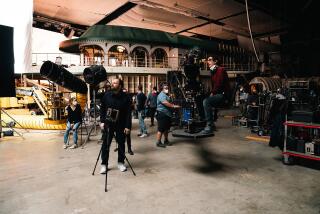Room for Improvement
- Share via
Film editor Dean Goodhill proposes to improve film exhibition by using the surface area of 35-millimeter cinema stock--he puts the amount at 37%--not currently devoted to the image projected on the screen.
The waste is created because cinema film was designed in the 1890s by legendary American inventor Thomas Edison to be 35-millimeters wide with each frame centered on a span of four perforations.
The MaxiVision frame, 31.2% larger than a standard movie image, runs sprocket-to-sprocket because it abandons use of the analog optical soundtrack, a remnant of sound film processes developed in the late 1920s. But modern movie film also carries signals or time codes for three digital sound systems, and the number of theaters using just the analog track is steadily dwindling.
MaxiVision also uses the so-called Super-35 format, which eliminates the space between frames and records a less rectangular image. It also centers each frame on three sprockets instead of four. The Super-35 format is used to film many TV shows because the frame more nearly matches the square shape of a TV screen rather than the wider motion-picture screen.
By eliminating the spaces between frames, MaxiVision can double from 24 to 48 the number of frames going past the camera and projector each second, but it requires only a 50% increase in film stock.
The combination of a larger image and faster projection rate tends to make scratches and lines on the film emulsion disappear. The faster running rate also allows projection with a brighter bulb because the film is moving too fast to become overheated. Heat causes film to deteriorate over time.
More to Read
The biggest entertainment stories
Get our big stories about Hollywood, film, television, music, arts, culture and more right in your inbox as soon as they publish.
You may occasionally receive promotional content from the Los Angeles Times.










